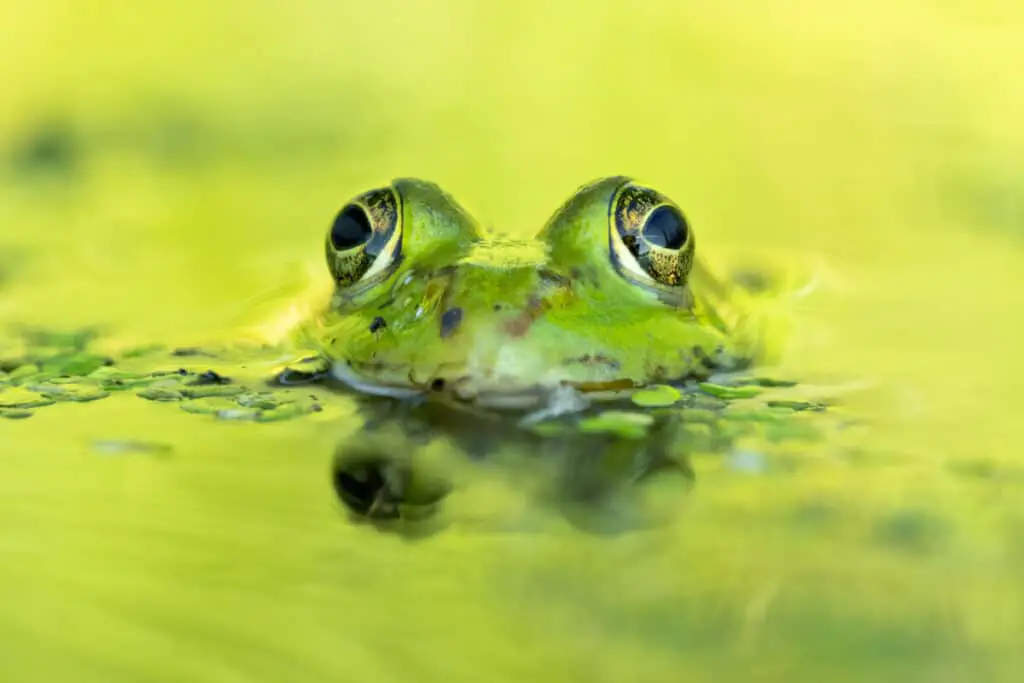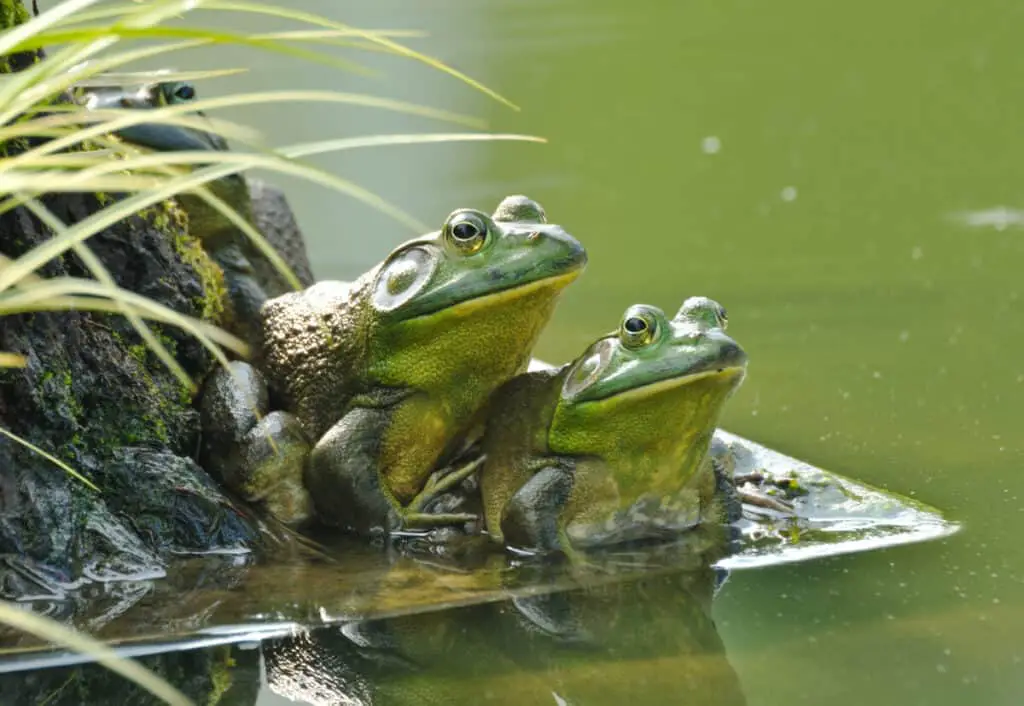Amphibians are an important part of many ecosystems, but they’re incredibly vulnerable to changes in their environment. They can’t survive far from water, and this poses a serious threat to their well-being.
In this article, we’ll explore why amphibians can’t live without access to water, and what implications this has for their future.
Most amphibians rely on moist environments because they need water to survive. Even if they live in dry climates like deserts or mountains, they still need access to water sources in order to reproduce and keep their skin moist. Without it, amphibians can quickly suffer from dehydration and die within days.
This is why it’s so important for them to stay near bodies of water such as ponds, lakes and rivers.

The Importance Of Moisture For Amphibians
Amphibians are creatures that need water to survive. They depend on it for sustenance, protection from predators, and even to reproduce. Without access to moisture, amphibians cannot survive in the long term.
The skin of an amphibian is very delicate and porous, meaning that it absorbs water easily and quickly. This helps the animal keep hydrated but also makes them vulnerable to dehydration in dry climates.
The skin of an amphibian also contains glands that help store moisture which can be released later when needed. This allows the amphibian to stay moist in more arid environments, but this is only a short-term solution since they still need regular access to water sources.
Amphibians rely heavily on moisture to complete their life cycles and stay healthy. For example, most amphibians lay their eggs in water where they can develop until they become larvae or froglets. These animals must return to water regularly so they can molt properly, as well as stay hydrated and hunt for food.
Without adequate levels of moisture, these processes would not be able to take place and the species would eventually die out due to lack of reproduction. Therefore, it is essential for amphibians to remain near accessible sources of moisture if they are going to thrive in their environment.
The Impact Of Dehydration On Amphibians
With their ability to live both on land and in water, amphibians have an amazing ability to survive most any environment – that is, unless they’re too far away from water.
As amphibians are not able to produce the necessary body fluids to stay hydrated, they must rely on external water sources in order to keep their bodies functioning properly. Without access to these external sources of water, dehydration can quickly become a problem for amphibians, leading to a variety of serious health issues.
The main way that amphibians regulate their internal body temperature is by absorbing or releasing moisture from the surface of their skin. This process requires them to be constantly moist in order for it to work properly. When there is no access to an external source of water, the amphibians’ internal temperatures become imbalanced and they are unable to regulate themselves at all which can lead to fatal results.
Amphibians are also susceptible to dehydration due to the fact that they have a great deal of surface area exposed compared with other animals. This means that when there is no access to external sources of water, the amount of moisture lost through evaporation increases significantly and can result in severe dehydration.
Additionally, when dehydrated, amphibians become sluggish and weak which makes them more prone to predation and even death as a result of lack of resources needed for survival.
Therefore, without adequate access to water sources, amphibians will struggle greatly and ultimately face life-threatening consequences such as dehydration or predation.
The Role Of Water In Reproduction
Amphibians rely heavily on water for their survival, as it plays an important role in many aspects of their life cycle. Without ready access to water, amphibians cannot survive for long and must find ways to return to a wetter environment.
One of the primary roles of water in amphibian life cycles is reproduction. Most amphibians lay their eggs in aquatic environments, such as ponds and lakes. This ensures that the eggs will remain moist and that the young can emerge from them in an aquatic setting where they will be able to feed and grow until they reach adulthood.
Additionally, some species use water as a medium to transfer vital nutrients between the male and female during mating.
Without access to water, amphibians are unable to complete these essential reproductive tasks, meaning that populations of these animals would struggle to thrive or even survive given a lack of wetland habitats.
Therefore, it is clear why maintaining access to clean freshwater sources is crucial for sustaining amphibian populations around the world.
The Consequences Of Drying Habitats
When it comes to amphibians, water plays a crucial role in their lives. Without it they cannot reproduce, as they require aquatic environments to lay eggs and hatch their young. Unfortunately, these habitats are drying up due to global warming and other environmental factors, which is leading to the possible extinction of some species of amphibians.
The main reason why amphibians cannot survive far from water is because their bodies are unable to retain moisture. Amphibians have permeable skin that allows them to absorb water, but also means that they can easily become dehydrated when exposed to air for too long. This makes them vulnerable to droughts and harsh conditions, as they do not have enough time or resources to find new aquatic environments or migrate elsewhere.
This has created an alarming problem for the future of amphibians. Many species are facing habitat loss and fragmentation, which limits their ability to reproduce in safe environments and find food sources. Even if they manage to survive the dry periods, they will still be at risk of becoming extinct due to competition with other animals or pollutants in the water that could harm them.
Ultimately, this has had a devastating impact on many populations around the world and highlights the importance of protecting our freshwater ecosystems so that these animals can thrive in their natural habitats.

Conservation Strategies For Protecting Amphibians
Despite the successful ability of amphibians to adapt to most environments, their need for water is essential for survival. Without access to water sources, amphibians would be unable to survive and their populations will suffer greatly.
Conservation of amphibian habitats is a key factor in protecting these species from extinction. In many cases, understanding local water sources can provide insight into the population of amphibians that inhabit an area.
In some areas, humans are depleting precious wetland habitats which are essential for amphibian survival. These wetlands also provide habitat for fish and other aquatic wildlife which can affect the overall health of an ecosystem if they become depleted. Therefore, it is important to conserve wetland habitats as well as create new ones where possible.
Enhancing stream flows and restoring riparian zones can help provide more natural aquatic habitats for amphibians and other wildlife species. Additionally, creating buffer zones around existing wetland habitats can help protect them from human disturbance and reduce pollutants from entering the water supply.
By implementing these strategies, we can help protect our rivers and streams and ensure that amphibians have access to clean water sources in order to survive far away from water bodies.
Conclusion
In conclusion, amphibians are highly dependent on water and moisture in order to survive. Without access to these elements, they become dehydrated and cannot reproduce or even survive in some cases.
For this reason, it’s important to protect the habitats of amphibians and take steps to maintain their natural sources of water. We must also make sure that any development does not dry up the environments in which amphibians live, as this could have devastating consequences for the species.
By taking proactive steps to conserve these habitats, we can ensure that amphibians can continue to thrive far from water.

